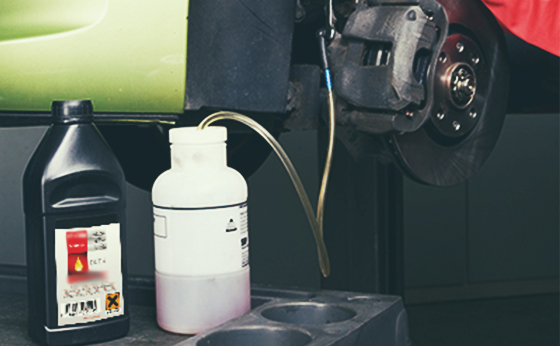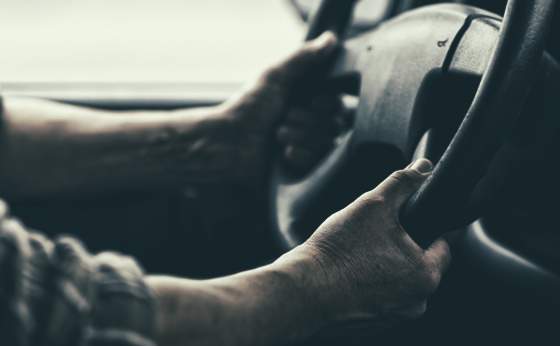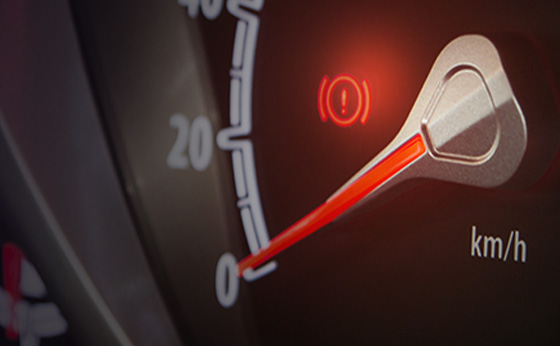Are you wondering, how do you fix squeaky brakes? Drivers often visit garages and workshops to ask about mysterious brake noise and there are many causes. Different types of noise indicate different types of problem. While the noise is often blamed on the brake itself, it can originate from vibrations or wear in the front-end assembly. Read on to find out about brake noise and information that will help you to make a brake noise diagnosis.
The different types of brake noise
1. Low frequency (deep noises or judders)
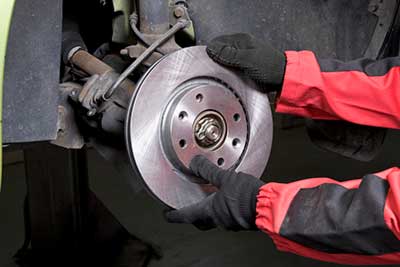 LIKELY CAUSES:
LIKELY CAUSES:
- Damaged discs
- Poor disc manufacture creating excessive disc thickness variation
- Incorrect disc installation leading to excessive runout
- Damaged, inconsistently worn or badly corroded discs
- Excessive pad wear leading to deposits on the disc
SOLUTION:
- Remove the brake disc and clean all surfaces of the brake assembly
- Replace the brake disc
2. Medium frequency (squealing)
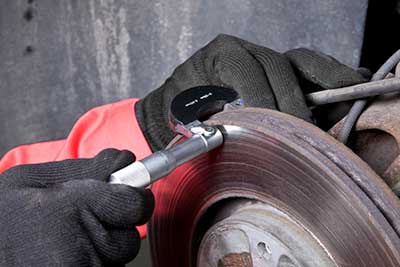 LIKELY CAUSES:
LIKELY CAUSES:
- Poorly fitted brake pad
- Incorrect allocation of anti-noise fixings such as shims
- Discs too thin
- Sticky movement on the caliper piston
- Non-planarity of the working surface of the disc
SOLUTION:
- Clean and lubricate the components of the caliper
- Make sure disc planarity stays within a tolerance of 0.1mm (once fitted)
- Clean the surface of the hub
- Replace the brake disc and check that brake pads, shims and accessories are fitted correctly
- Consider damping the noise with shims or brake pads that have anti-noise features
3. High frequency (squeaking)
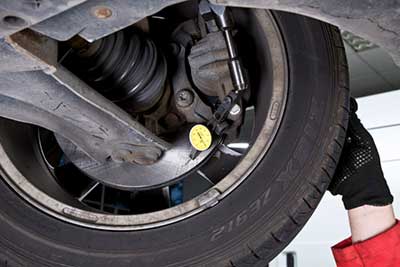 LIKELY CAUSES:
LIKELY CAUSES:
- The usual reason for a high-pitched squeaky noise is vibration within the friction material during application of the brakes
SOLUTION:
- Replace the brake pad set
- Check that the brake accessories (including the caliper clips) are correct and well fitted
Visual clues to brake noise problems
You can get a good idea of the probable causes of noise by looking at the appearance of the surfaces of brake parts. Jack up the vehicle, remove the pads and have a close look at all the surfaces to see symptoms and identify remedies. You may spot:
A) Tapered pads
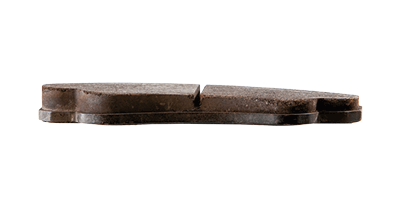 If you can see tapered pads, this will be caused by the caliper. Either the caliper slides are sticking, the caliper has become distorted or there may be excessive caliper clearance.
If you can see tapered pads, this will be caused by the caliper. Either the caliper slides are sticking, the caliper has become distorted or there may be excessive caliper clearance.
Remedy: Replace the pad set and service the caliper.
B) Damaged back plate
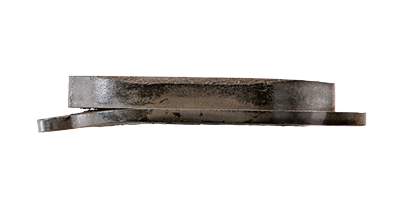 Backing plates can get weak and damaged over time. This can be general wear and tear, or incorrect or forceful fitting. A worn back plate can cause noise and even brake failure.
Backing plates can get weak and damaged over time. This can be general wear and tear, or incorrect or forceful fitting. A worn back plate can cause noise and even brake failure.
Remedy:Replace the full brake pad set.
C) Uneven wear
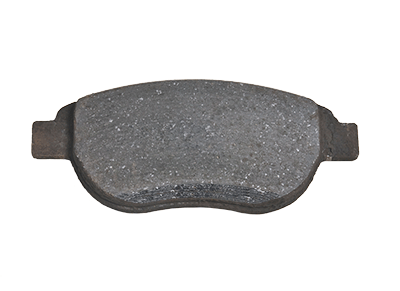 If there’s uneven wear on the surface of the brake pad then it means there’s irregular wear on the brake disc. You’ll be able to see a wear lip on the brake disc.
If there’s uneven wear on the surface of the brake pad then it means there’s irregular wear on the brake disc. You’ll be able to see a wear lip on the brake disc.
Remedy: Replace the brake discs and pads.
D) Uneven wear within the axle
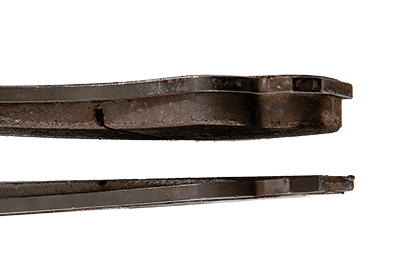 You may be able to see that one or more brake pads within the axle set are excessively worn. This means that the caliper piston or guide pins are sticking.
You may be able to see that one or more brake pads within the axle set are excessively worn. This means that the caliper piston or guide pins are sticking.
Remedy: Service the caliper slides and pistons and replace the pads. Check the discs.
E) Damage from the piston
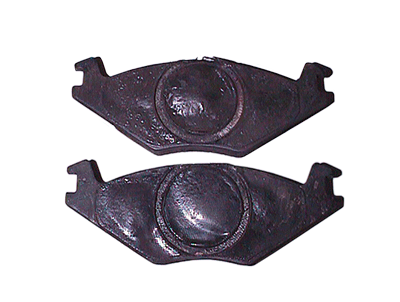 Sometimes, anti-noise features (like the rubber coat or shim) get damaged by the piston. This is because the piston doesn’t fully retract or through heavy brake use and overheating.
Sometimes, anti-noise features (like the rubber coat or shim) get damaged by the piston. This is because the piston doesn’t fully retract or through heavy brake use and overheating.
Remedy: Replace the brake pads set and service the caliper.

1. Strip and clean up the caliper slides and pins.

2. If there’s heavy rust or pollutants, use emery paper to ensure the caliper can slide

3. The pins need lubrication to ensure free movement, or they can seize into the caliper body. Check the condition of the slide pin rubber boots to stop water ingress.

4. Make sure there is free piston movement, and retract the piston fully – this is essential to avoid any damage to the shim or rubber coat.

5. Check to see if the brake pads fit freely and easily into the caliper brackets.

6. Clear any burrs off the brake pad edges if needed. The pad needs to move freely inside the brackets to avoid ongoing contact, squealing or uneven wear.

7. In some cases (eg. old rusted calipers), it’s a good idea to lightly lubricate the contact points between the metal back plate and slides with copper grease (NB: take care that NO grease touches the friction materials and follow manufacturer’s instructions).

8. Insert wear indicators in or on the brake pads (when appropriate).
9. Screw in the caliper fixing bolts.
10. Replace the thread-lock bolts with new ones.

11. Follow the correct tightening torque and sequence recommendations.
12. Once the brake caliper is reassembled, pump the brake pedal until the stroke is around one third of the full stroke potential.
13. Check that the brake operates correctly – including pad retraction.
14. Time to refit the wheel. If there is free rotation, the vehicle is ready to go.
Do a road test to make sure the braking system is in full working order. When the car is returned to the driver, advise them about bedding-in to avoid brake judder in the future and ensure optimum efficiency.
The content contained in this article is for entertainment and informational purposes only and should not be used in lieu of seeking professional advice from a certified technician or mechanic. We encourage you to consult with a certified technician or mechanic if you have specific questions or concerns relating to any of the topics covered herein. Under no circumstances will we be liable for any loss or damage caused by your reliance on any content.
